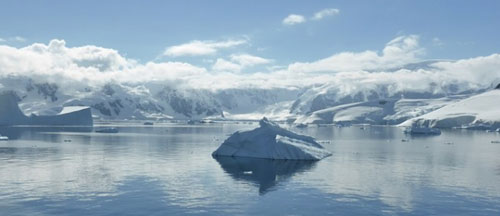
About 16,000 years ago, the deep ocean released so much carbon dioxide that it may have ended the last Ice Age, according to a new study.
The study, led by the University of Southampton and published in the journal Nature, shows that carbon stored in an isolated reservoir deep in the Southern Ocean re-connected with the atmosphere, driving a rise in atmospheric carbon dioxide (CO2) and an increase in global temperatures.
Scientists believe these findings can give them insight into how the ocean affects the global carbon cycle and climate change.
During ice ages, atmospheric CO2 levels hover around 185 parts-per-million (ppm), whereas warmer periods (called interglacials) like the one we’re experiencing today measure around 280 ppm. And the oceans, which currently contain approximately 60 times more carbon than the atmosphere, can readily exchange with the atmosphere and rapidly release their carbon stores.
“The magnitude and rapidity of the swings in atmospheric CO2 across the ice age cycles suggests that changes in ocean carbon storage are important drivers of natural atmospheric CO2 variations,” joint lead author Dr. Miguel Martínez-Botí said in a statement.
“Our findings support the theory that a series of processes operating in the southernmost sector of the Atlantic, Pacific and Indian Oceans, a region known as the ‘Southern Ocean’, changed the amount of carbon stored in the deep-sea. While a reduction in communication between the deep-sea and the atmosphere in this region potentially locks carbon away from the atmosphere into the abyss during ice ages,” he added, “the opposite occurs during warm interglacial periods.”
The researchers based their findings on a chemical analysis of the calcium carbonate shells of ancient marine organisms that lived on the surface of the ocean thousands of years ago. Chemical signatures on their shells indicate the acidity of the seawater back during the last ice age, which in turn allows the amount of CO2 in the water to be calculated.
“We found that very high concentrations of dissolved CO2 in surface waters of the Southern Atlantic Ocean and the eastern equatorial Pacific coincided with the rises in atmospheric CO2 at the end of the last ice age, suggesting that these regions acted as sources of CO2 to the atmosphere,” explained co-author Gianluca Marino, from the Australian National University.
Scientists now worry that as the oceans warm (last summer saw the hottest ocean temperatures yet), their ability to absorb atmospheric CO2 will be compromised, potentially leading to a more rapidly warming climate.
nature world news

